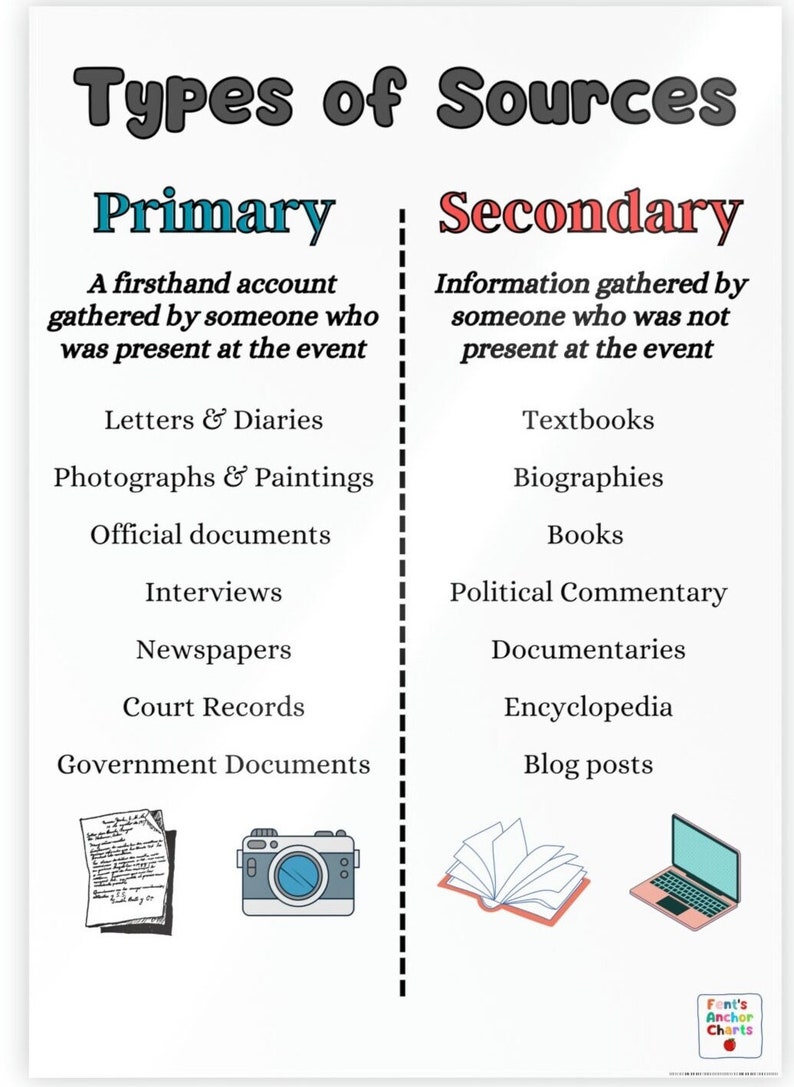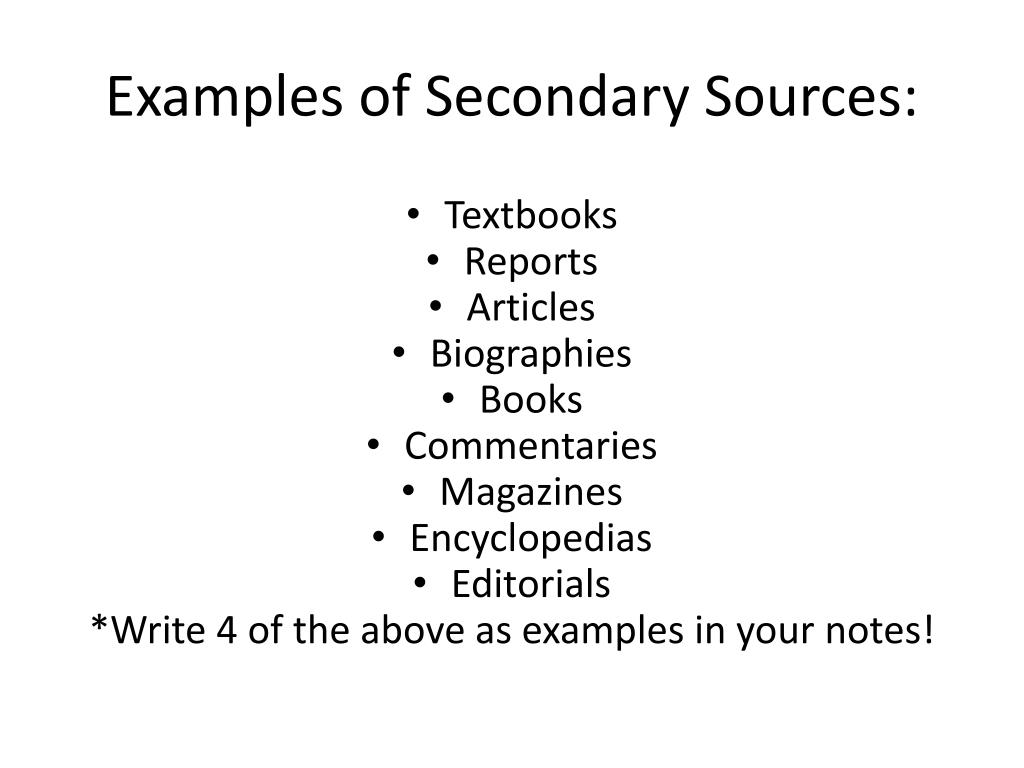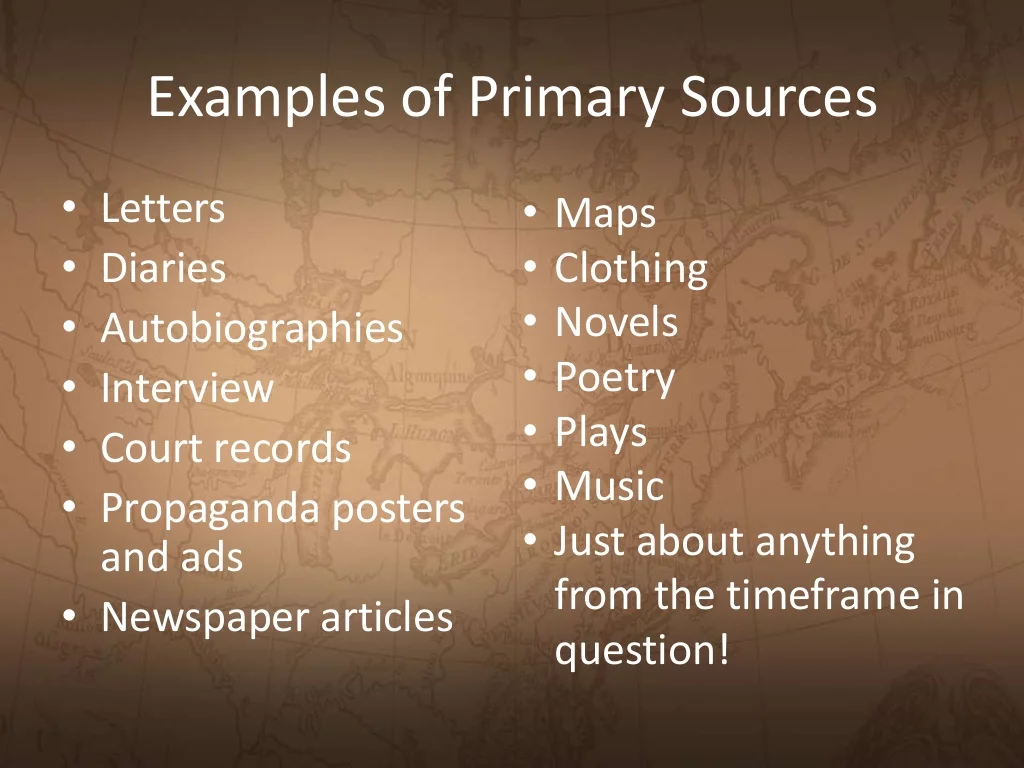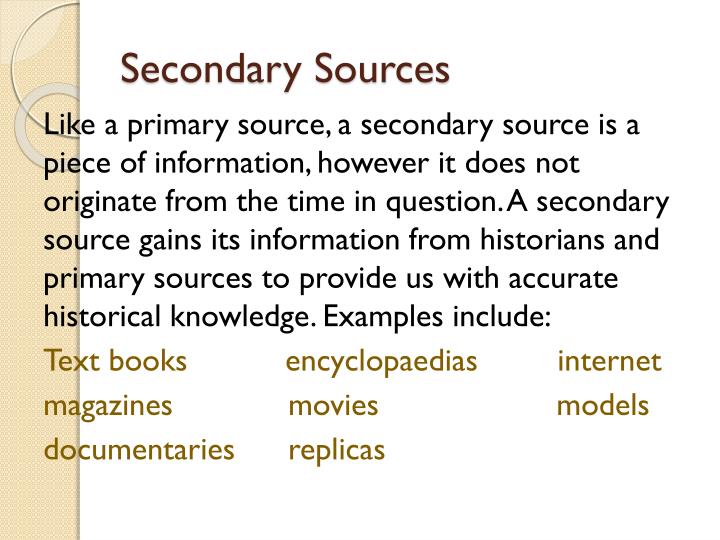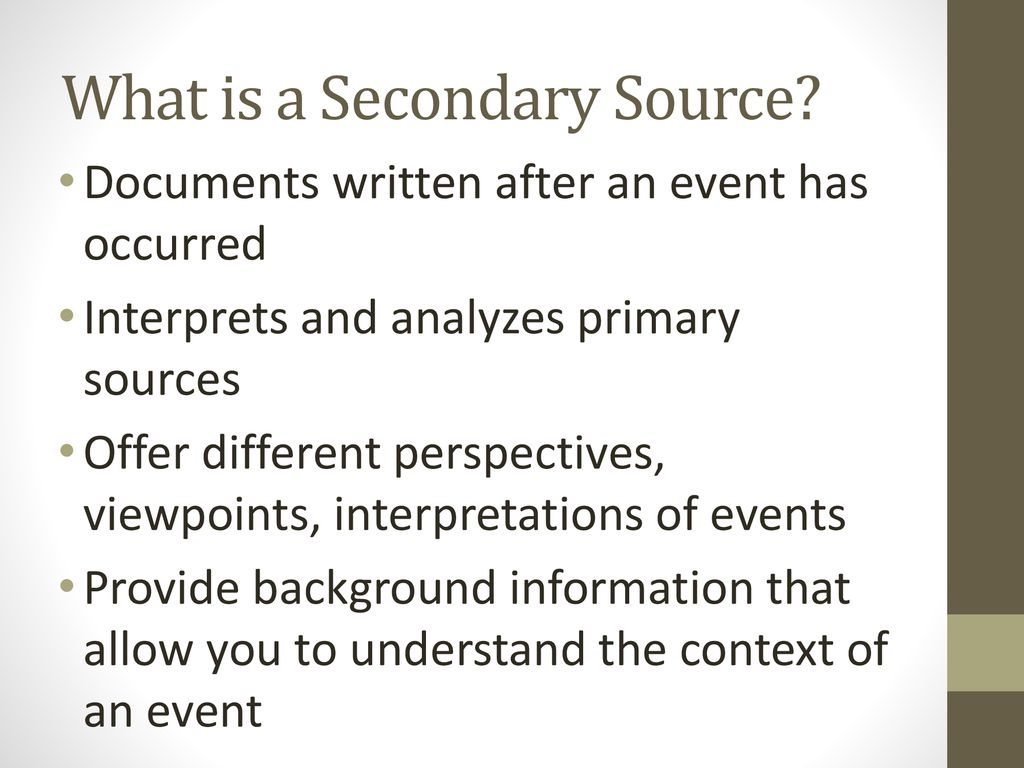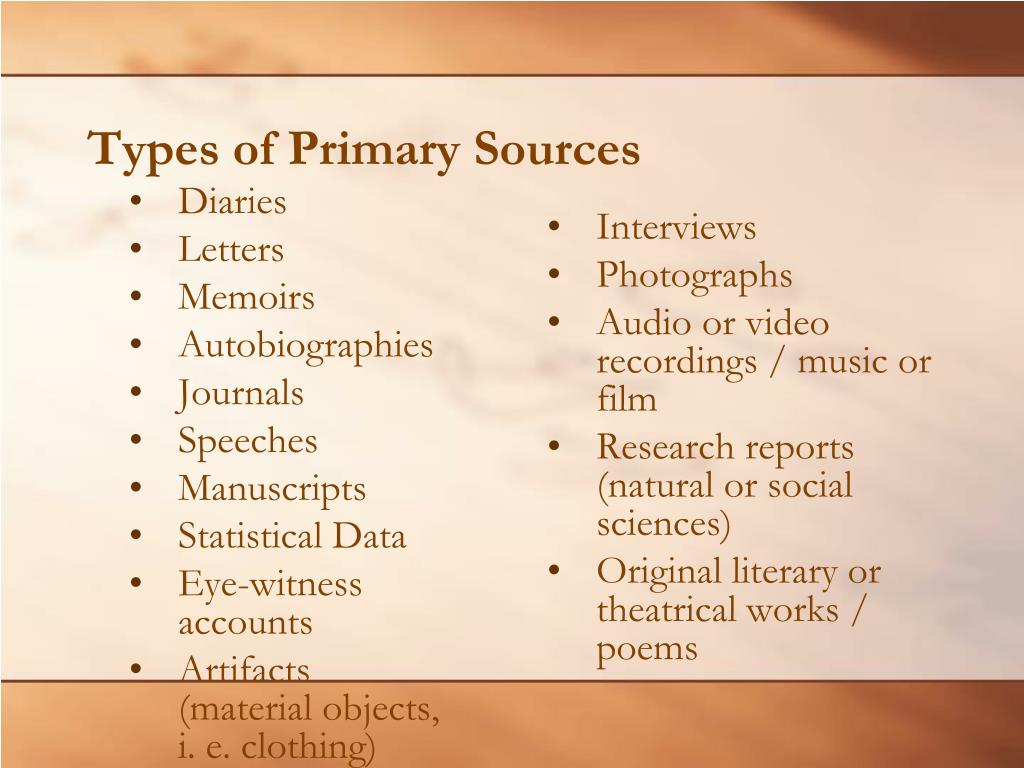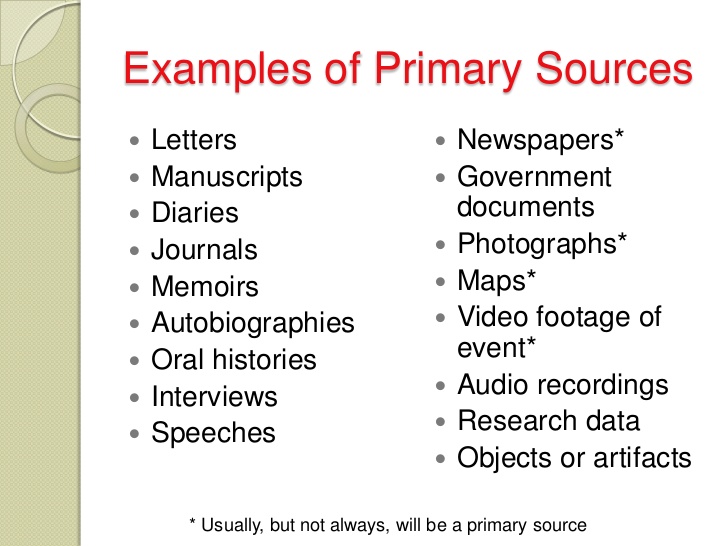Which Of The Following Is A Secondary Source
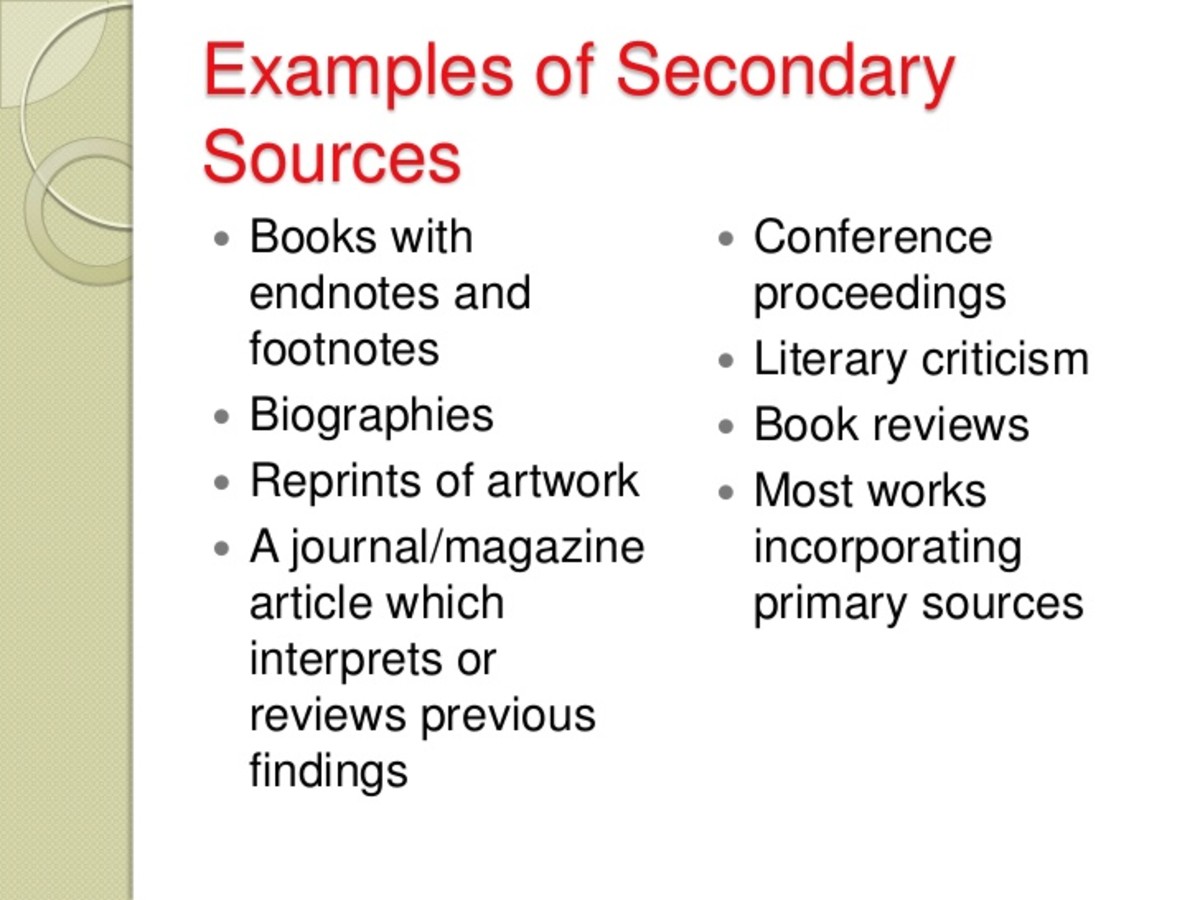
The question of identifying secondary sources is critical for students and researchers. Misunderstanding this distinction can lead to flawed analysis and academic errors.
Understanding the difference between primary and secondary sources is crucial for academic integrity and research validity. This article clarifies what constitutes a secondary source, equipping readers with the knowledge to correctly identify them in their studies.
What Defines a Secondary Source?
A secondary source interprets, analyzes, or summarizes information from primary sources or other secondary sources. It provides a second-hand account of an event, a piece of research, or a creative work.
Examples include textbooks, biographies, literature reviews, and news articles that report on research findings.
Key Characteristics
Secondary sources offer commentary and interpretation. They are not original firsthand accounts. They typically present information in a more accessible and digestible format than primary sources.
Authors of secondary sources were not directly involved in the events or research they describe.
Examples for Clarity
To illustrate the concept, consider a few examples. A historian writing a book about World War II relies on primary sources like letters from soldiers and government documents.
The historian's book itself becomes a secondary source. It analyzes and interprets the primary sources to form a narrative and draw conclusions.
Similarly, a news article summarizing a scientific study is a secondary source. The original study, published in a peer-reviewed journal, is the primary source.
Distinguishing from Primary Sources
Primary sources provide direct or firsthand evidence concerning an event, object, person, or work of art. These sources offer an inside view of an event.
Examples include original documents, creative works, and artifacts. They can include diaries, speeches, manuscripts, letters, interviews, news film footage, autobiographies, and official records.
Understanding this distinction is crucial to identify a secondary source.
Why the Distinction Matters
Identifying sources accurately is vital for conducting credible research. Relying solely on secondary sources can lead to a biased or incomplete understanding of a topic.
Researchers must use primary sources to form their own interpretations. This avoids perpetuating the biases or inaccuracies present in secondary analyses.
Proper source identification strengthens the validity and reliability of research findings.
Common Misconceptions
One common misconception is that all online sources are secondary. Websites hosting original documents, like digitized letters or historical photographs, can be primary sources.
Conversely, blog posts or opinion pieces analyzing current events are often secondary sources. The key is to assess the origin and purpose of the source.
The distinction is about the relationship of the source to the original event.
The Role of Scholarly Articles
Scholarly articles published in peer-reviewed journals can be either primary or secondary sources. It depends on the nature of the research presented.
A research article reporting the results of a new experiment is a primary source. However, a review article synthesizing existing research on a topic is a secondary source.
Look at the methodology section to know which one it is.
Practical Application
When evaluating a source, consider its author, publication date, and purpose. Is the author presenting original research or analysis?
Was the author involved in the event being described? Determining the answers to these questions helps to identify the nature of the source.
Critical evaluation skills are essential for academic and professional success. Consider who the author is, what evidence is given, when it was written, and where it was published.
Consequences of Misidentification
Misidentifying a secondary source as a primary one can undermine research credibility. It can lead to inaccurate conclusions and flawed arguments.
In academic writing, it's a fundamental error that can affect a student's grade. In professional settings, it can damage a researcher's reputation.
Always verify the nature of sources thoroughly.
Tools and Resources
Many online resources can assist in distinguishing between primary and secondary sources. University libraries and academic databases often provide guides and tutorials.
Consulting with a librarian or professor can also provide valuable insights. These experts can offer guidance on identifying and evaluating sources.
Use every resource available when researching.
Ongoing Development
The definition of primary and secondary sources may evolve with new forms of media and information. As digital platforms emerge, these definitions will need to be revisited.
Researchers and educators will continue to adapt their strategies for source evaluation. This keeps pace with the changing information landscape.
Continue to learn the evolution of media to be ahead.



